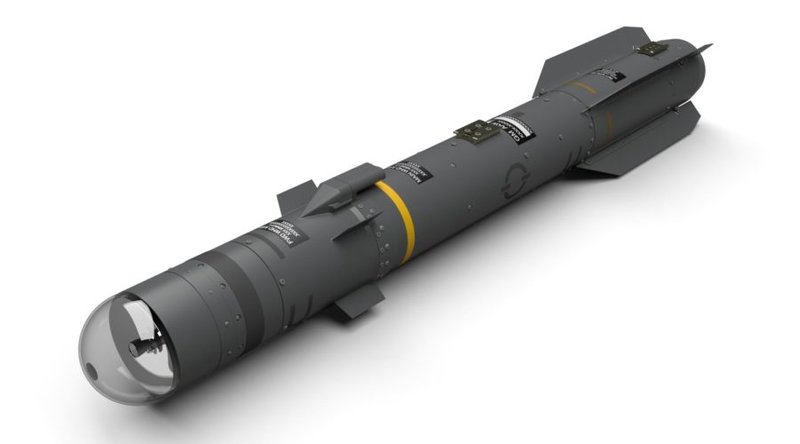New Brimstone-equipped tank destroyers will help modernise Poland’s land forces
The new Ottokar-Brzoza tank destroyers will help modernise the capabilities of Poland’s land forces, one of the largest in Europe, as the country continues its recent defence spending spree, according to GlobalData.
The Polish Armaments Agency’s agreement with the PGZ-OTTOKAR consortium to begin production of the Ottokar-Brzoza tank destroyer system is a key element of the Polish government’s ongoing efforts to modernise the capabilities of its land forces.
The Ottokar-Brzoza programme has the potential to significantly impact Poland’s defense industrial base, according to the findings of GlobalData. The PGZ-OTTOKAR consortium, comprised of key domestic firms, Polish Armaments Group (PGZ), Mesko, Huta Stawola Wola and Wojskowe Zakłady Elektroniczne (WZE), has also signed a cooperation agreement with MBDA UK to facilitate integration of the latter’s Brimstone anti-tank guided missiles (ATGMs) on the new Ottokar-Brzoza platform.
Tristan Sauer, land domain analyst at GlobalData, commented: “Continued Russian geopolitical belligerence has put one of NATO’s most active member states on a war footing, with the Polish Ministry of National Defence having enacted several key procurement initiatives in recent months to replace ageing Soviet-era platforms and enhance interoperability with NATO partners.”

// The Brimstone missile is increasingly being considered for integration on land-based systems, with Ukraine having operated it in such a role. Credit: MBDA
A recent GlobdalData report, ‘Poland Defense Market Size and Trends, Budget Allocation, Regulations, Key Acquisitions, Competitive Landscape and Forecast, 2022-2027’, highlights that one of the main hurdles faced by the Polish defence industry is the lack of ammunition and missile production capacity.
Sauer continued: “This agreement will enable Poland’s defense industry to exchange invaluable technical expertise and refine manufacturing processes through a strong partnership with a leading European defense prime. Consequently, the Polish government remains keen to establish production facilities for Brimstone in-country, while MBDA will also benefit by reinforcing its supply chain through the cultivation of business relationships with new industrial partners based in a key NATO member state.”
Current plans anticipate the first Ottokar-Brzoza tank destroyer prototypes will roll off the production line in 2023, with the first units to be sent to Poland’s 14th Anti-Tank Artillery Regiment guarding the strategic border with Lithuania, colloquially known as the Suwalki Gap.
Sauer added: “The Polish Armaments Agency plans to achieve initial operational capability by 2025 as geopolitical tensions with neighboring Russia have boosted both the defense budget and political willpower to achieve a comprehensive overhaul of the nation’s military and industrial capabilities.”
Dstl is playing its part in helping the UK and its allies stay ahead of those who wish us harm and threaten our way of life.
Data-intensive applications cause issues for legacy technology
Often the technology and networks that are used within the forces were initially developed for low levels of data use. This means the available technology and bandwidth is no longer appropriate for today’s massive data usage involving video footage, high-definition sensor data and mega-pixel imagery.
These legacy systems and siloed ways of working pose a complex challenge when looking to ensure overwhelming military advantage with near-peer adversaries.
The UK Ministry of Defence, through its Land Environment Tactical Communications and Information Systems (LE TacCIS) programme, aims to deliver tactical military communications via the TRINITY sub-programme. Similarly, The US Department of Defense, through its Joint All-Domain Command and Control (JADC2) initiative, is also working to overcome these challenges.
JADC2 aims to enable a more resilient communications network that will ensure its military is quicker to respond to threats. JADC2 also wants to ensure a co-ordinated approach that will enable data-sharing across the military services, while ensuring parity of access to information and reliable communications across command and control structures.
In a similar way, the Morpheus programme (also part of LE TacCIS) will deliver new technology so that soldiers on the frontline can more easily share large quantities of data and updates with headquarters and vice-versa. The programme also aims to ensure easy information sharing between different domains and implement autonomous formations of land, air and naval platforms.
// Main image: Test and evaluation procedures can help defence minimalise its carbon footprint. Credit: QinetIQ
FORCE MODERNISATION